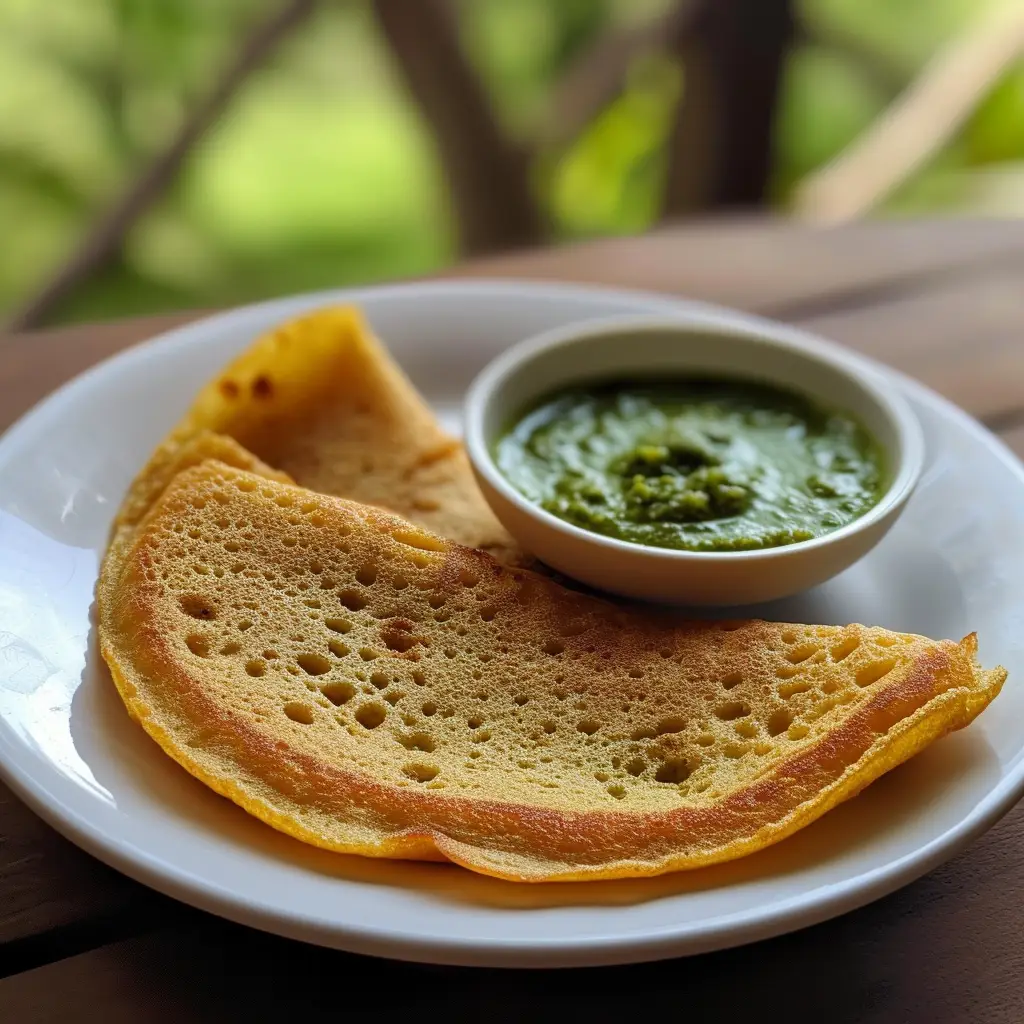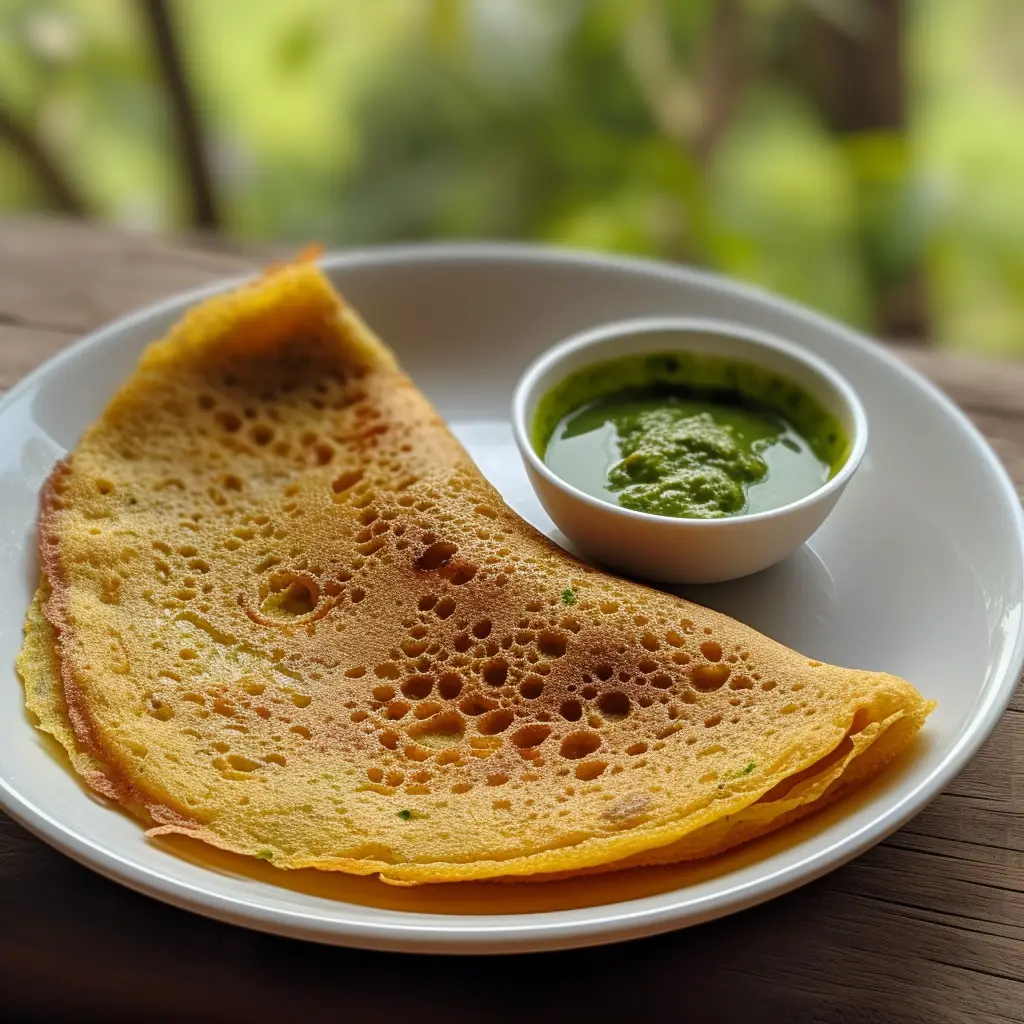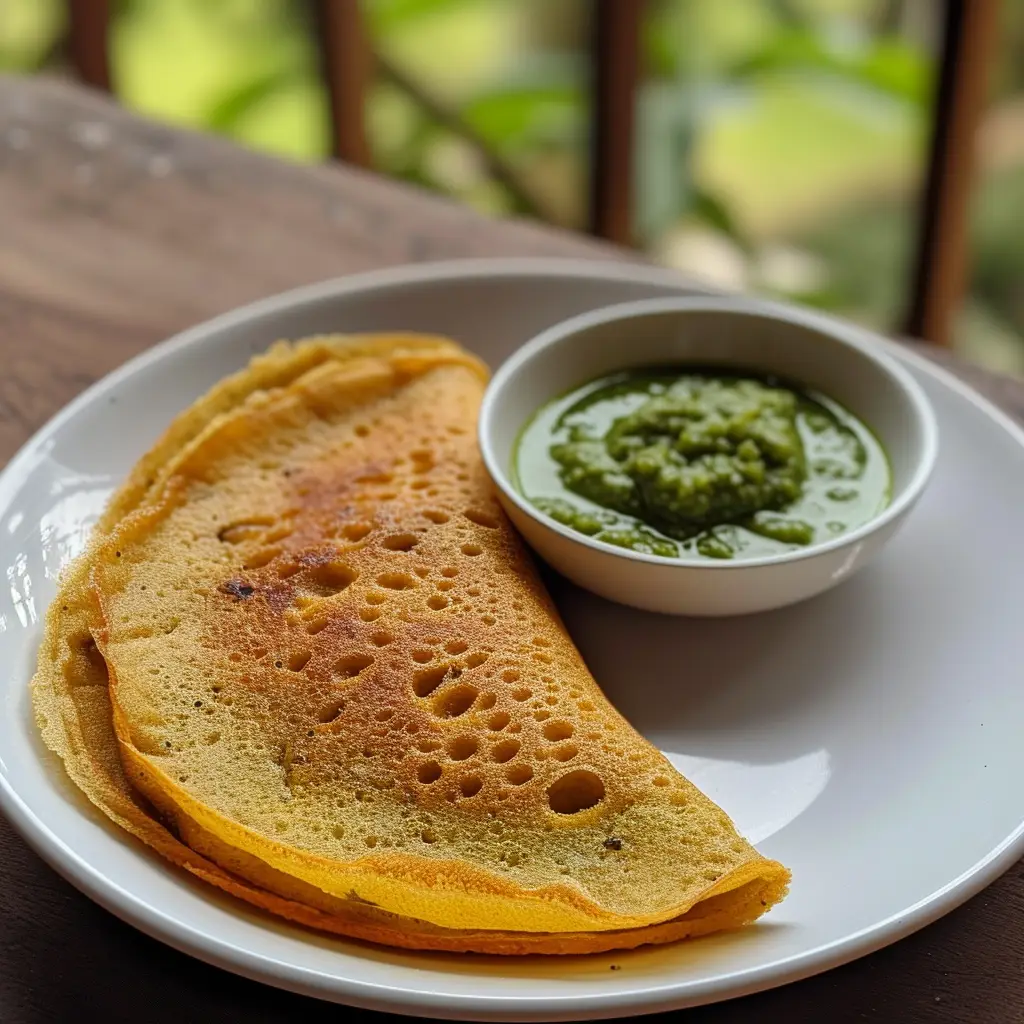Let’s discover Pesarattu, a crispy and nutritious South Indian pancake that’s both delicious and healthy. This dish is a delightful part of South Indian cuisine, and I’m excited to share more about it with you.
Pesarattu is a unique pancake because it’s made with green gram (also known as mung bean) batter. It’s not just tasty but also packed with nutrients. People in South India love to have it for breakfast or as a snack.
In this blog, I’ll tell you more about Pesarattu—where it comes from, how it’s made, and why it’s a favorite choice for those looking for a healthy and tasty meal. It’s a simple and wholesome dish, so let’s explore the world of Pesarattu together!
Pesarattu Dosa Recipe
Equipment
- A blender or grinder
- A non-stick skillet or griddle
- A spatula
Ingredients
- 1 cup Whole green gram (moong dal)
- 2 tablespoons Rice (optional, for crispiness)
- 1-2 Green chilies as per taste
- 1- inch piece Ginger
- Salt to taste
- Water as needed for grinding
- Oil for cooking
For Serving:
- Freshly chopped onions optional
- Coriander leaves optional
- Chutney or pickle of your choice
Instructions
Step 1: Soak the Ingredients
- Begin by soaking the whole green gram and rice (if using) in enough water to cover them completely. Let them soak for about 6-8 hours or overnight. This soaking process is crucial as it softens the grains, making them easier to grind and digest.
Step 2: Prepare the Batter
- Drain the soaked green gram and rice, and transfer them to a blender. Add green chilies, ginger, and salt to the mix. Grind everything to a smooth batter, adding a little water as needed to facilitate the grinding process. The consistency of the batter should be similar to that of a dosa batter – not too thick, not too runny.
Step 3: Heat the Skillet
- Heat a non-stick skillet or griddle over medium heat. A drop of water should sizzle when it hits the pan, indicating it’s ready for cooking. Lightly brush the skillet with oil.
Step 4: Cook the Pesarattu
- Pour a ladleful of the batter onto the center of the skillet. Quickly spread it outwards in a circular motion to form a thin crepe. Drizzle a few drops of oil around the edges of the Pesarattu to ensure it doesn’t stick to the pan and gets crispy edges. If you like, sprinkle some finely chopped onions and coriander leaves on top for added flavor.
- Cook until the bottom side of the Pesarattu turns golden brown, then flip it over and cook for another minute or two until the other side is done.
Step 5: Serve Hot
- Serve the Pesarattu hot, accompanied by coconut chutney, ginger chutney, or any pickle of your choice. For a traditional Andhra touch, Pesarattu is sometimes served with upma inside, known as ‘MLA Pesarattu’.
Tips and Information

Tips and Information
- Consistency of Batter: Ensure the batter is not too thick; it should have a pouring consistency to spread easily on the skillet.
- No Fermentation Required: Unlike dosa, Pesarattu batter does not need to ferment, making it a quicker option for meals.
- Variations: You can add finely chopped vegetables or spices to the batter for different flavors.
FAQs
1. Can I make Pesarattu without rice?
Yes, Pesarattu can be made solely with green gram, but adding a bit of rice improves the texture, making it crisper.
2. How can I ensure my Pesarattu is crispy?
The key to a crispy Pesarattu is the consistency of the batter (it should be thin) and cooking it on a medium-high flame until the edges start to lift off the skillet.
3. Can I add toppings to my Pesarattu?
Absolutely! Common toppings include chopped onions, green chilies, and coriander leaves, added right after spreading the batter on the skillet.
4. How can I store leftover Pesarattu batter?
The batter can be refrigerated for 1-2 days. Make sure to bring it to room temperature before cooking.
5. Is Pesarattu gluten-free?
Yes, Pesarattu is naturally gluten-free, making it suitable for those with gluten sensitivities.


